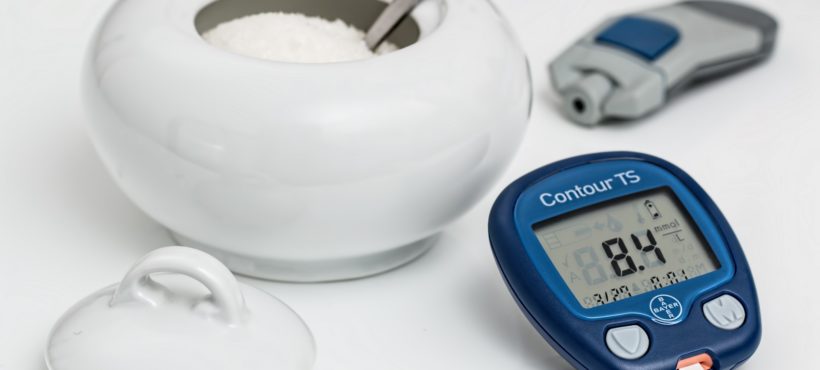Diabetes affects over 30 million people in the United States. Unchecked symptoms can result in severe health complications that drastically affect one’s quality of life.
But, there are ways you can prevent diabetes from developing, and it all starts with managing your blood sugar levels.
Not sure where to start? Don’t worry, we’ve got you covered.
Let’s take a look at everything you need to know about how to lower blood sugar levels.
1. Start Exercising
One of the best ways to regulate your blood sugar levels is to incorporate an exercise routine into your lifestyle.
Consistent workouts will cause your body to become more sensitive to insulin. You’ll also utilize blood sugar for energy during strenuous physical activity.
This doesn’t mean you need to engage in heavy weight lifting, though. People with joint pain or those who need to keep their exercise intensity low will highly benefit from biking, swimming, and even walking.
2. Keep an Eye on Your Carbs
When your body metabolizes carbohydrates, it converts them into glucose. When you overeat carbohydrates, though, your glucose levels. This, of course, will adversely affect your blood sugar.
So, it’s imperative that you monitor the amount that you consume.
While there isn’t a hard number that you need to aim for in terms of carbohydrates, a solid habit to form is to make low-carb meal choices whenever possible. Over time, this type of diet can significantly reduce your blood sugar levels.
3. …And Your Fiber
As opposed to carbs, you’ll need to increase your consumption when it comes to fiber. Fiber will cause the absorption of carbohydrates to be more gradual. This will allow you to have better control of your blood sugar levels.
The type of fiber that you consume matters, too.
Soluble fiber has been proven to have a significant impact on reducing blood sugar levels. Legumes, whole grains, and vegetables are fiber-rich foods you should incorporate into your diet.
Incorporating a small portion of a fiber-rich food with every meal will ensure that you get enough intake.
4. Check the Glycemic Index
In order to provide a measurement of how the body responds to the consumption of carbohydrates, the glycemic index (GI) assigns foods a number between 1 and 100.
Foods with lower numbers will have a lesser effect on blood sugar levels. In fact, long-term consumption of foods with a low GI number can reduce these levels.
For those at risk of developing diabetes, this is often a reliable way to keep blood sugar in check.
Low GI foods to add to your diet include:
- Beans
- Eggs
- Seafood
- Sweet potatoes
- Corn
Fast food should be avoided due to the negative impact it has on both your blood sugar and your digestive system.
Although consuming foods with a low GI can be beneficial, it’s still important to keep an eye on how many carbs you consume.
5. Monitor Your Blood Sugar Levels
Even after taking measures to regulate your blood sugar, monitoring it is crucial.
By checking (and recording) your blood sugar levels each day, you’ll be able to track your progress when aiming to keep things in check. This is especially useful when adding certain foods to your diet, as you’ll be able to see how your body reacts to them.
Monitoring these levels will also inform you of other changes you need to make.
For example, if your low-GI diet has been consistent for over a month but your levels still aren’t stable, then the problem could be your level of physical activity. From here, you can make further lifestyle changes to help get things under control.
6. Keep Your Weight in Check
While losing weight and exercise often go hand-in-hand, being active doesn’t always equate to maintaining a healthy weight. This is especially true if your diet isn’t under control.
Maintaining a healthy body weight not only prevents future complications from arising but it also facilitates your blood sugar levels stabilizing at a healthy number.
For those who are significantly overweight, cutting back on unhealthy foods and incorporating more exercise into your routine could prove to be the fastest and most efficient way to lower your blood sugar.
A decrease in body fat of approximately 7-10% could reduce your risk of developing diabetes by over 50%.
Losing weight should be your top priority if your blood sugar levels aren’t quite where they should be. Even if they are regulated, staying overweight can still cause issues in the future.
So, start cutting back if you’re not at a healthy weight for your height and age.
7. De-Stress
High levels of stress (especially over a period of time) can adversely affect your blood sugar levels.
During stressful situations, hormones like cortisol and glucagon are released, causing your blood sugar numbers to increase. Even with other measures taken to reduce your levels, consistent stress could put them in an unsafe range.
College students, in particular, are particularly susceptible to this complication due to rigorous academic requirements.
Prioritizing activities that help reduce your stress levels will prove to be worth the time you make for them. Relaxation, light exercise, and meditating can all significantly reduce blood sugar levels.
Additionally, de-stressing has the added benefit of improving your productivity, your relationship with friends and family, and overall quality of life.
Understanding How to Lower Blood Sugar Levels Can Seem Difficult
But it doesn’t have to be.
With the above information about how to get lower blood sugar in mind, you’ll be well on your way to kicking bad habits and improving your health.
You can check out our catalog for affordable treatment options.



